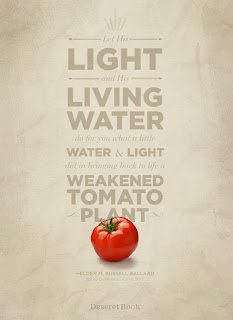Self-reliance is the ability, commitment, and effort to provide for the spiritual and temporal well-being of ourselves and of our families.1
As we learn and apply the principles of self-reliance in our homes and communities, we have opportunities to care for the poor and needy and to help others become self-reliant so they can endure times of adversity.
We have the privilege and duty to use our agency to become self-reliant spiritually and temporally. Speaking of spiritual self-reliance and our dependence on Heavenly Father, Elder Robert D. Hales of the Quorum of the Twelve Apostles has taught: “We become converted and spiritually self-reliant as we prayerfully live our covenants—through worthily partaking of the sacrament, being worthy of a temple recommend, and sacrificing to serve others.”2
Elder Hales counseled us to become self-reliant temporally, “which includes getting a postsecondary education or vocational training, learning to work, and living within our means. By avoiding debt and saving money now, we are prepared for full-time Church service in the years to come. The purpose of both temporal and spiritual self-reliance is to get ourselves on higher ground so that we can lift others in need.”3
President Young had great trust in the capacities, talents, faithfulness, and willingness of the women, and he encouraged them in specific temporal duties. While the specific duties of Relief Society sisters are often different today, the principles remain constant:
- Learn to love work and avoid idleness.
- Acquire a spirit of self-sacrifice.
- Accept personal responsibility for spiritual strength, health, education, employment, finances, food, and other life-sustaining necessities.
- Pray for faith and courage to meet challenges.
- Strengthen others who need assistance.4
It makes me think of the parable of the ten virgins. Half were wise and prepared, half were foolish and were not prepared. Be wise and add the necessary oil to your lamps, both temporally and spiritually. Be persistant and patient in your efforts to become self-reliant. As you do, line upon line, drop by drop, you will be ready and prepare for the coming of the Bridegroom.
Winter Food Storage Tips:
For long storage life, when harvesting winter squash it's important to leave some of the stem attached to the fruit. After harvesting, let your squash cure in a warm place (75 to 80 degrees F.) for 10 days or so. When ready for storage the outer skin should be very firm. Store winter squash in a cool (to to 60 degree F) place that’s well ventilated. Check your stored squash monthly to make sure you use it up before it shows sign of decay.
Your potatoes can be dug and “cured” for storage. Curing toughens up a potato’s skin and extends its storage life. Cure the tubers by laying them out on newspaper in a well-ventilated place that’s cool (50 to 60 degrees F.) and dark (so they don’t turn green). After about two weeks, the skins will have toughened up. Rub off any large clumps of dirt (potatoes should never be washed before storage). Store your spuds into ventilated bins, bushel baskets, or a cardboard box with perforated sides. Completely cover the boxes or baskets with newspaper or cardboard to eliminate any light. Even a little light will cause potatoes to turn green and be rendered inedible. The ideal storage temperature for potatoes is 35 to 40 degrees, though they will usually keep for several months at 45 to 50 degrees.
For carrots, because of our cold climate, you can store them right in the ground and have garden fresh carrots all winter long! Be sure to cover the carrots with 12" of straw, leaves, even grass clippings. Be sure to dig them all up before the soil begins to warm up in early spring.

